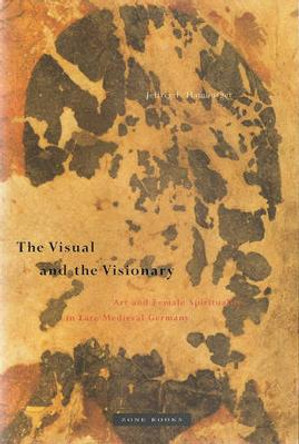Description
Why does a society seek out images of violence? What can the consumption of violent imagery teach us about the history of violence and the ways in which it has been represented and understood? Assaf Pinkus considers these questions within the context of what he calls galleries of violence, the torment imagery that flourished in German-speaking regions during the fourteenth and fifteenth centuries. Exploring these images and the visceral bodily responses that they produced in their viewers, Pinkus argues that the new visual discourse on violence was a watershed in premodern conceptualizations of selfhood.
Images of martyrdom in late medieval Germany reveal a strikingly brutal parade of passion: severed heads, split skulls, mutilated organs, extracted fingernails and teeth, and myriad other torments. Stripped from their devotional context and presented simply as brutal acts, these portrayals assailed viewers' bodies and minds so violently that they amounted to what Pinkus describes as "visual aggressions." Addressing contemporary discourses on violence and cruelty, the aesthetics of violence, and the eroticism of the tortured body, Pinkus ties these galleries of violence to larger cultural concerns about the ethics of violence and bodily integrity in the conceptualization of early modern personhood.
Innovative and convincing, this study heralds a fundamental shift in the scholarly conversation about premodern violence, moving from a focus on the imitatio Christi and the liturgy of punishment to the notion of violence as a moral problem in an ethical system. Scholars of medieval and early modern art, history, and literature will welcome and engage with Pinkus's research for years to come.
About the Author
Assaf Pinkus is Professor of Art History at Tel Aviv University. He is the author of Sculpting Simulacra in Medieval Germany, 1250-1380 and Patrons and Narratives of the Parler School: The Marian Tympana, 1350-1400. His current studies focus on giants and the temporalities of salvation.
Reviews
"This is a valuable lesson in looking, and a model of careful and well-supported visual analysis that moves beyond familiar linkages between violent imagery and the imitation of Christ."
-H. McCune Bruhn Choice
"Visual Aggression is not only valuable as a new resource engaging with an infrequently studied category of objects, Pinkus's analysis of monumental and public facing devotional imagery also provides a much-needed counterpoint to the more frequently discussed objects and devotional practices used by medieval mystics and religious communities."
-Claire Kilgore Journal of Medieval Religious Cultures
"Many readers will undoubtedly appreciate Pinkus's emphasis on nondevotional responses to martyrdom scenes as a refreshing alternative to the imitatio Christi model that has traditionally informed interpretations of these images."
-Tamara Golan caa.reviews
"Visual Aggression is a game-changer in the study of violence in medieval art. While violence in itself was a fertile field in medieval studies, this book enables us to rethink the core questions behind the assumptions some medievalists have regarding the meaning and function of acts of violence in medieval art and culture."
-Ittai Weinryb,author of Agents of Faith: Votive Objects in Time and Place
"A suggestive and richly illustrated study of violence imagery in late medieval German-speaking lands. Pinkus meticulously collates and catalogues the monumental 'galleries of violence' that are his focus, contextualising sculptural cycles of martyrdom in the Upper and Middle Rhine regions with reference to local histories and circumstances. Attentive to issues of language, he also shows how the concept of violence came to be located within an ethical system. The result is a significant contribution to our understanding of medieval martyrdom imagery and the responses it elicits."
-Robert Mills,author of Suspended Animation: Pain, Pleasure and Punishment in Medieval Culture
Book Information
ISBN 9780271083797
Author Assaf Pinkus
Format Hardback
Page Count 216
Imprint Pennsylvania State University Press
Publisher Pennsylvania State University Press
Weight(grams) 1089g
Dimensions(mm) 254mm * 203mm * 22mm




